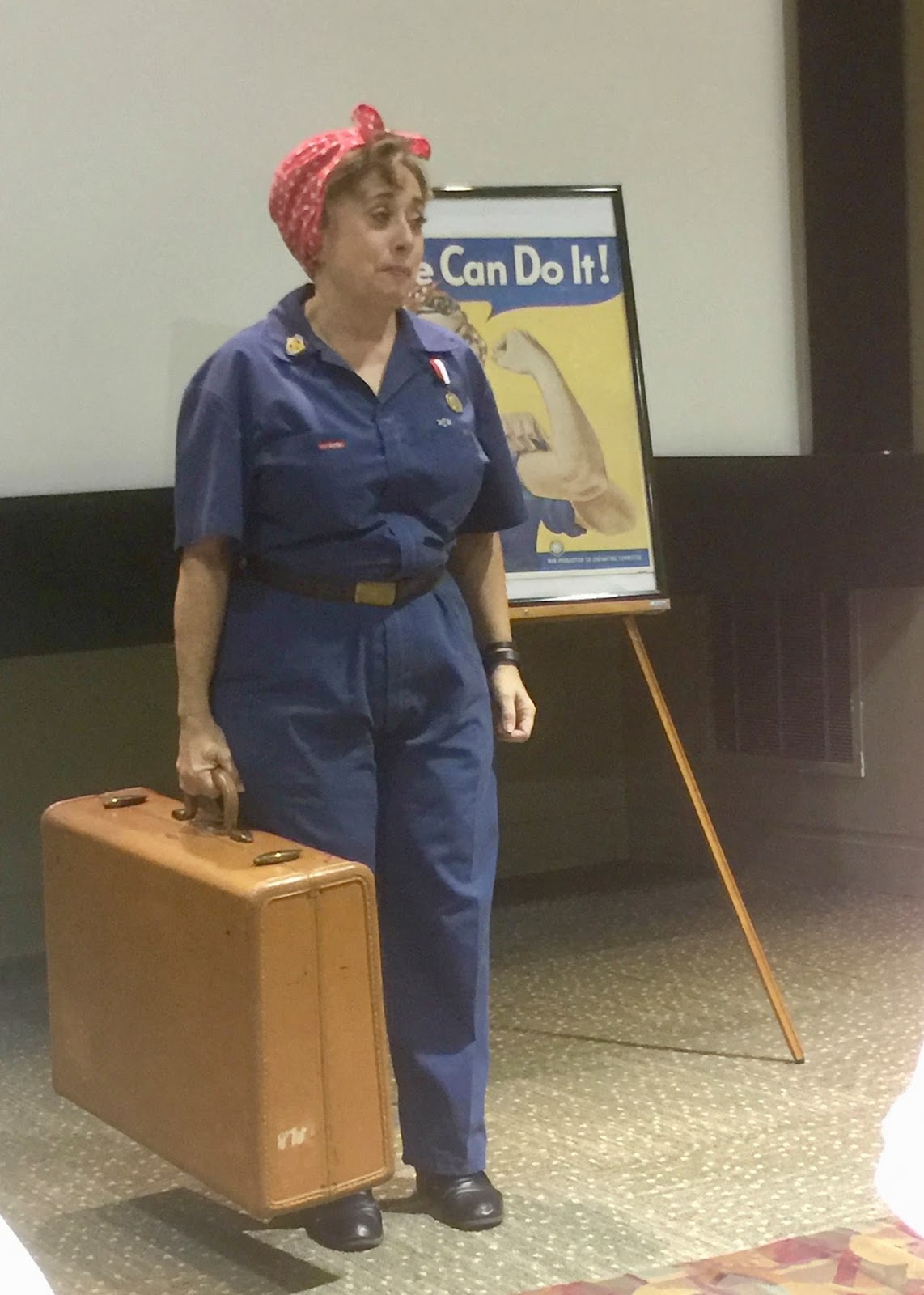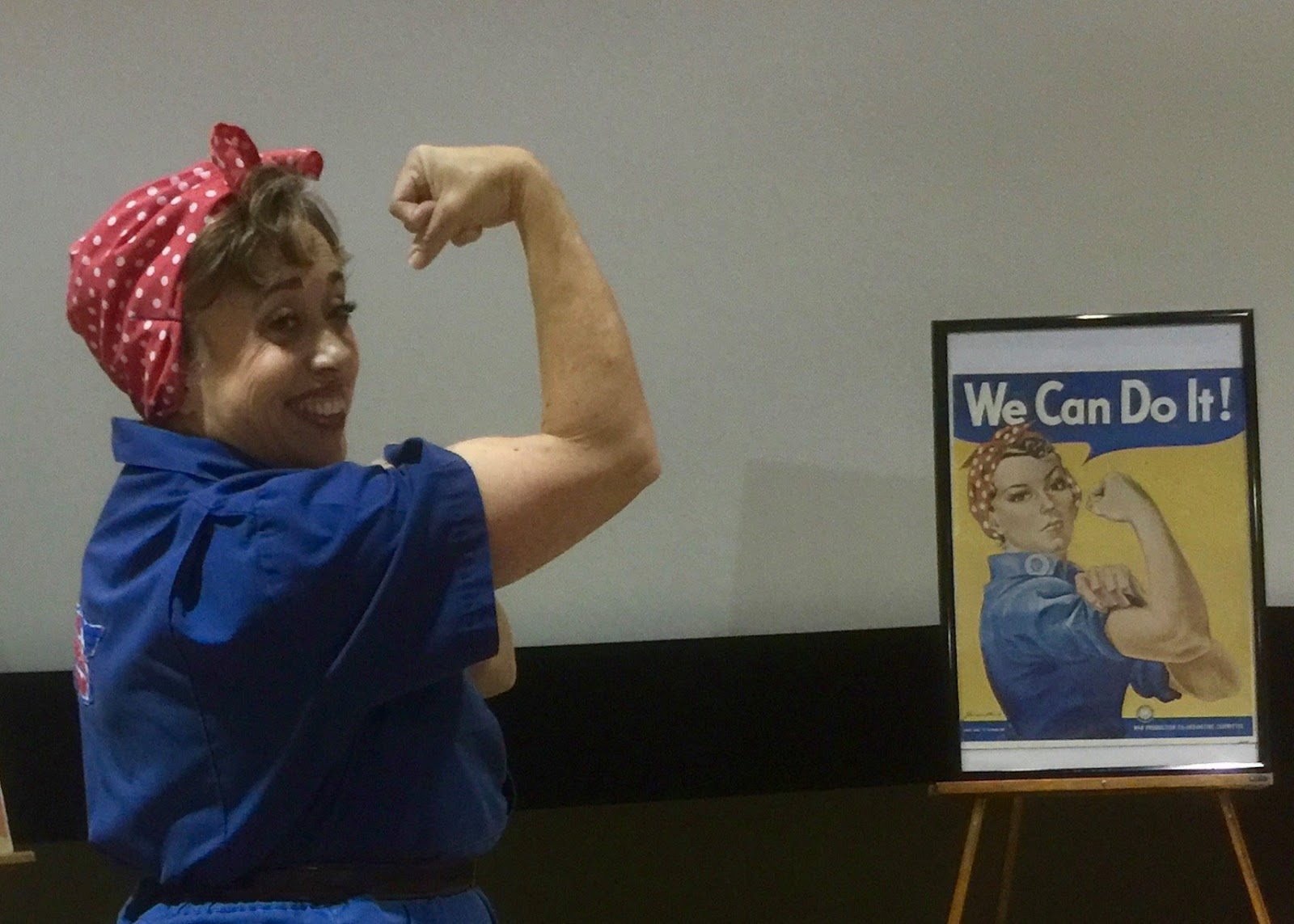A highlight of our storytelling week was a trip to Roosevelt's Little White House at Warm Springs. A special treat was getting to see our friend Carol Cain portray "Rosie the Riveter". Carol has been bringing "Rosie" to life at Warm Springs every year for nearly a quarter of a century.
 |
The national Rosie the Riveter organization has been formed. Carol is a "Rosebud" in that group because her mother was a "Rosie". I am eligible to join as a "Rivet" because I am a guy whose mother worked in the war effort during the Second World War. My mother, a young mother of two girls at the time, was recruited by Calloway Mills to run a nursery for female workers at their plant in Milstead GA.
|
 |
| Carol created a series of a half-dozen or so "Rosies" modeled on real wartime workers that she has met or read about. Each has a different background and job, but each is doing her part to keep America's war effort going at home. |
 |
| Carol also displayed a part of her large collection of Rosie paraphernalia. |
 |
| Carol's show deserved a better photographer, or at least a better camera. I hope my iPhone snapshots give an idea of her outstanding performance. If you get a chance to see the full 45 minute show, you'll be glad you did. |
 |
| We need to find a way to bring Carol back to Rome specifically to do this show. |
 |
| Sheila and I had seen Carol's abbreviated Rosie performance at the Azalea Storytelling Festival in LaGrange several years ago. We didn't realize that what we saw then was only a small part of the whole. |
 |
The famous poster by Howard Miller was created for Westinghouse as a morale booster and was not called Rosie. It really didn't become famous till the 80s.
Here's what Wikipedia says:
In 1942, Pittsburgh artist J. Howard Miller was hired by the Westinghouse Company's War Production Coordinating Committee to create a series of posters for the war effort. One of these posters became the famous "We Can Do It!" image—an image that in later years would also be called "Rosie the Riveter", though it was never given this title during the war. Miller is thought to have based his "We Can Do It!" poster on a United Press International wire service photograph taken of a young female war worker, widely but erroneously reported as being a photo of Michigan war worker Geraldine Hoff (later Doyle.)[42] More recent evidence indicates that the formerly mis-identified photo is actually of war worker Naomi Parker (later Fraley) taken at Alameda Naval Air Station in California.[43][44][45] The "We Can Do It!" poster was displayed only to Westinghouse employees in the Midwest during a two-week period in February 1943, then it disappeared for nearly four decades. During the war, the name "Rosie" was not associated with the image, and the purpose of the poster was not to recruit women workers but rather as motivational propaganda aimed at workers of both sexes already employed at Westinghouse. It was only later, in the early 1980s, that the Miller poster was rediscovered and became famous, associated with feminism, and often mistakenly called "Rosie the Riveter" |
 |
Here she strikes the famous pose, as she did with great flair several times.
Carol demonstrated a very strong singing voice by opening her Rosie depiction with song, showing off her "guns" on the closing phrase of the famous "Rosie the Riveter" song. Here's a YouTube video backed by the 1942 song.
youtu.be/55NCElsbjeQ |









No comments:
Post a Comment